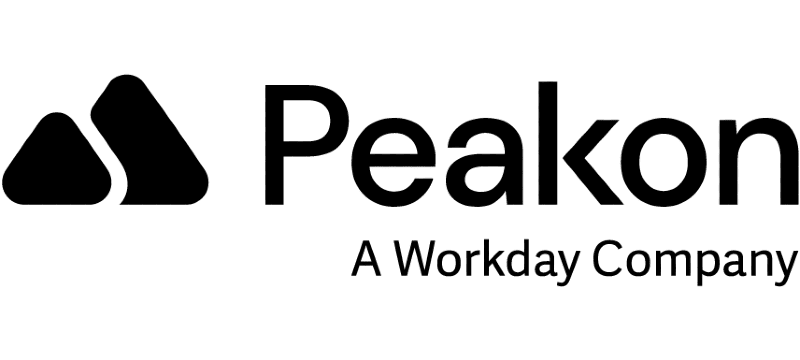Harnessing employee voices to prevent attrition and power engagement
Technology can drive active, ongoing listening to your employee's feedback in real-time
Discover how to automatically analyze this feedback to create an inclusive employee experience to retain talent
Learn ways to use this data to predict and prevent unwanted attrition

The days of beanbags and pool tables being enough to recruit and retain the best talent are long gone. The past 18+ months have given us some enormous shifts in the way people and organizations operate, especially in recruitment.
Now, as we all strive to understand how we can win the war for talent, the employee’s voice matters more than ever. But you need to listen actively and continuously, far above and beyond the traditional employee survey. And more than that, organizations need to connect the dots with this information about their people and apply it to talent pipelines, career development, skills and training, benefits and rewards – the entire employee lifecycle!
Following one of the biggest HR tech acquisitions of the last year, Patrick Cournoyer, Workday Product Director for Peakon Grow, led this webinar to unpack the power of this newly extended brand. Learn how the solutions can help you, plus how to maximize the value of your investment if you’re an existing (or potential!) customer. He is joined by Jon Kennard, Editorial Content Manager at UNLEASH.
Watch the on-demand webinar today, or read on for some of the key takeaways from this session.
Shift your focus beyond the immediate future
“Change is absolutely the new normal.”
Patrick Cournoyer, Workday Product Director, Peakon Grow
Patrick attests that the current pace of change, accelerated by the pandemic but visible even pre-pandemic, is unlikely to slow for the foreseeable future. “With the change we’ve had in the past year, some of us are probably feeling a bit tired. But change is not stopping – 2022 is right down the road, and there is going to be more change coming. We need to find a way to handle and action change in a way that is not going to be disruptive to our business.”
The challenges of the past 18 months are not likely to go away anytime soon; instead, they are likely to accelerate as uncertainty continues and organizations become more adapted to the “new normal.” Returning to the pre-pandemic status quo no longer seems possible or even desirable. Organizations need to learn from their challenges, figure out how to solve them, and incorporate their learnings into their future strategies. In short, organizations must shift their approach from firefighting to developing a future-focused process that accommodates regular evolutions, planning for the next 2-3 years instead of the next 2-3 months.
Identify the signs of coming attrition early enough to nip it in the bud
“Attrition is happening, and there will be more to come.”
Patrick Cournoyer, Workday Product Director, Peakon Grow
Attrition is a significant threat to nearly every organization. In a poll taken during the live webinar that asked about the biggest challenges facing participants’ companies today, preventing unwanted attrition was “the runaway leader,” beating trending topics including hybrid work, wellbeing, and DE&I.
According to Patrick, while this comes as no surprise, there are ways to circumvent coming attrition. Workday’s comprehensive research, which comprises 185 million responses from 160 countries, has uncovered the key signs for trouble on the talent horizon. “We can look at levers from organizations from 6 months ago and see what their scoring trends and habits were as an aggregate group, and we can see if there are current scoring behaviors that are clear indicators that more attrition is on its way.”
The point of identification for employees who plan to leave the company shifted from 6 months to 11 months during the pandemic. But while employees may stay longer than they would have in the past, those additional months should be considered “borrowed time.” If nothing is done for employees who show early signs of disengagement, you are only offsetting future problems; active listening is the key to turning this threat around. A sophisticated listening solution is often the most effective and reliable way to gauge your potential future attrition – and mend it before it becomes a reality.
Turn the “Great Resignation” into the “Great Regeneration” with active listening
“We have this amazing opportunity in front of us to set our path for the future by having our employees be at the center of everything we do.”
Patrick Cournoyer, Workday Product Director, Peakon Grow
Patrick laid out some grim statistics: replacing employees ranges in cost from 50-250% of their salary, and 27% of current employees show similar scoring behaviors to recently resigned employees. The attrition rates for most organizations polled present an intense challenge for both HR teams and the company’s bottom line.
But there is still time to rectify. While the “Great Resignation” obviously comes with myriad difficulties, it also presents unique opportunities for intelligent organizations. With new technologies, HR leaders are increasingly empowered to identify and understand the kaleidoscope of issues that impact the employee experience and, consequently, retention and productivity.
The key to creating the “Great Regeneration” is active listening. Employees want to have their voices heard and know that their wants and needs are being addressed. Even if their specific concerns cannot immediately be fixed, recognizing them goes a long way. A lack of response from the organization often makes employees less likely to participate in the future, and reduced participation is one of the critical indicators of coming attrition.
According to Patrick, the way to resolve infeasible employee concerns is through open communication: “Transparency and vulnerability have never been more of a strength. Identify actionable areas and communicate that you have heard their other concerns and will address them when possible.”
Listen to the full webinar to catch all of Patrick’s insights and learn how to utilize technology to prevent attrition and power engagement in the new talent landscape.
Workday’s privacy statement can be found here: https://www.workday.com/en-us/privacy.html
